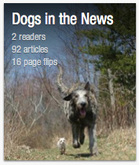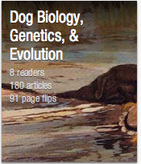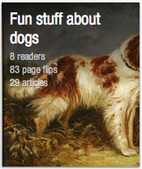
A study of Standard Poodles, Giant Schnauzers, and Briards found that toe cancer was associated with a copy number variation (CNV) - repeats of a set of nucleotides - in a gene (KITLG) involved in melanocyte development (melanocytes are involved in pigmentation). The repeats have apparently been selected for because they improve intensity of pigmentation, thereby inadvertently increasing the risk of toe cancer in proportion to the copy number. The nine black Giant Schnauzers examined were all homozygous for four copies of the CNV, as were 3 of 4 Briards. Light colored Standard Poodles also carry the risk alleles, but are apparently protected from toe cancer by a mutation in the MC1R locus (melanocortin 1 receptor), which is also involved in pigmentation. The challenge now will be to assess the frequency of copy number variants in the breed using population genetics and genome screening, then devise breeding strategies that will reduce risk without adversely affecting genetic diversity.
Other breeds at highest risk for this type of aggressive cancer include the Gordon Setter and Kerry Blue Terrier. (download pdf)
Karyadi DM, Karlins E, Decker B, vonHoldt BM, Carpintero-Ramirez G, et al. (2013) A Copy Number Variant at the KITLG Locus Likely Confers Risk for Canine Squamous Cell Carcinoma of the Digit. PLoS Genet 9(3): e1003409. doi:10.1371/journal.pgen.1003409
Other breeds at highest risk for this type of aggressive cancer include the Gordon Setter and Kerry Blue Terrier. (download pdf)
Karyadi DM, Karlins E, Decker B, vonHoldt BM, Carpintero-Ramirez G, et al. (2013) A Copy Number Variant at the KITLG Locus Likely Confers Risk for Canine Squamous Cell Carcinoma of the Digit. PLoS Genet 9(3): e1003409. doi:10.1371/journal.pgen.1003409
 RSS Feed
RSS Feed





